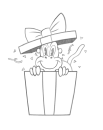What's in Premium?
In this lesson, you'll learn how to transform a 2D plan into 3D forms by assigning heights to its features. Starting with a provided plan showing width and depth, you'll explore creative ways to define the heights:
- Invert positive and negative spaces.
- Squash or stretch the height of portions.
- Create floating elements connected by lines.
Using templates, you'll draw height lines to track elevations and enhance the illusion of depth. By practicing with side and front elevations (orthographic projections), you'll ensure accuracy and understand true proportions.
The lesson guides you to think three-dimensionally, encouraging you to create your own forms and experiment with different views. You'll start simply and gradually move toward more complex shapes.
Get this lesson and more in the premium course!
Your assignment is to take a top-down plan (which only shows width and depth) and turn it into a 3D form by inventing the height. You can be creative—stretch, shrink, or flip parts, and even make pieces float. This is about training your brain to think in 3D.
- Use graph paper or the plan templates in the downloads tab to make it easier on you
- Feeling ambitious? Make up your own plans
- You can also draw side and front views to better understand the form
- Keep the shapes right-angled for now (no curves or bevels yet)
The main goal is to explore how different elevations can turn the same plan into many unique 3D shapes.
Deadline - submit by April 07, 2025 for a chance to be in the critique video!








